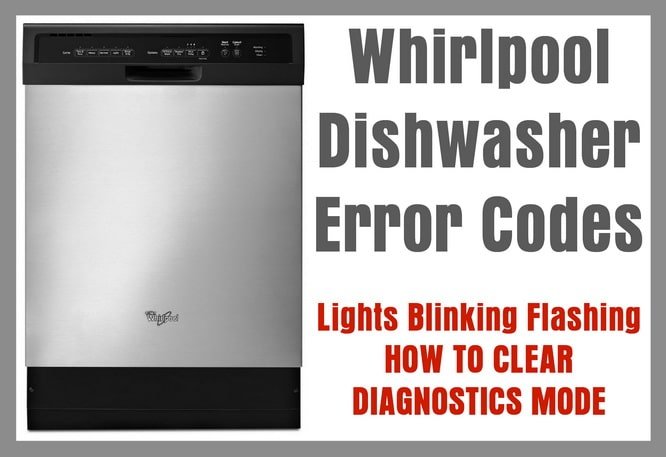
Seeing an error code can be a bit daunting, especially if you’ve never encountered it before. But don’t fret. These codes are essentially your dishwasher’s way of telling you that it needs a little bit of help. Now, you might be thinking, “Can I just hit reset and make it go away?” That’s a great question, and it’s what we’re here to explore. Resetting is often the first step in troubleshooting many electronic devices, akin to giving them a small nap to refresh their processes. But is this quick fix enough to solve the E3 conundrum in a Whirlpool dishwasher? Let’s dive into what you need to know.
Understanding Error Code E3
Error code E3 in a Whirlpool dishwasher typically points towards a problem with the heating element. Imagine the heating element as the heart of your dishwasher’s water heating mechanism. If it’s not working properly, your dishwasher can’t heat water to the necessary temperature to clean dishes effectively. This is similar to trying to wash greasy plates in cold water — you just won’t get the same clean results.
Now, what causes this problem? The E3 code could be due to a faulty heating element, a burned-out thermostat, or even a problem with the wiring that connects these components. Think of it like a malfunctioning toaster — if the elements inside that toaster aren’t working, you aren’t going to end up with that perfectly toasted slice of bread you’re hoping for. Sometimes, the issue could be as simple as an overloaded dishwasher that affects the heating cycle, preventing it from reaching the required temperature.
So, what’s the impact? Besides not getting your dishes clean, running your dishwasher with an E3 error can result in higher energy bills and potentially more extensive damage to your appliance if left unchecked. It’s crucial to diagnose and address the issue promptly to keep everything running smoothly.
Does Resetting Help?
Here’s the deal: resetting your dishwasher is like hitting the refresh button. It halts all ongoing processes and gives your machine a chance to start fresh. This can sometimes resolve minor glitches and errors. Resetting involves turning off the dishwasher, waiting a few minutes, and then turning it back on. It’s comparable to rebooting your computer — a simple act that can solve a variety of minor issues.
However, resetting alone may not always solve the problem, especially if the heating element or related components are damaged. Consider a scenario where your car doesn’t start because of a dead battery. Turning the ignition on and off repeatedly won’t magically recharge the battery. Similarly, if there’s a deeper issue causing the E3 error, a reset might not cut it.
If you’ve tried resetting and the code persists, it’s time to consider other solutions. It could mean checking the heating element for continuity with a multimeter, as experts often suggest. But before diving into technical diagnostics, it’s best to explore the simpler angles first.
Steps to Take if Resetting Doesn’t Work
Alright, so you’ve hit reset, and that pesky E3 code isn’t budging. What’s next? First off, don’t panic. Begin by checking for visible signs of trouble. Open your dishwasher and look at the heating element at the bottom of the machine. Is there any visible damage — like burns or breaks? If everything looks intact, move to examining the thermostat.
If you’re feeling confident and a bit adventurous, you can use a multimeter to check for electrical continuity in the heating element and thermostat. This isn’t unlike checking the batteries in your TV remote to see if they’ve still got some juice. If they’re dead, you need replacements.
If you’re not comfortable with this step, it might be time to call in an expert. Professional technicians have the tools and experience to diagnose and fix these issues without the trial and error that might come with DIY methods.
Preventative Tips
Prevention is always better than cure, right? To avoid seeing the E3 error code as much as possible, ensure your dishwasher isn’t overloaded. Just like you wouldn’t cram too many clothes into a washing machine, you should avoid stuffing your dishwasher to the brim. Regularly cleaning the filter and sprayers can also help maintain optimal performance.
Moreover, it’s crucial to perform routine checks on your dishwasher’s heating element and thermostat. Think of it as a health checkup for your appliance. Catching a potential issue early can save you from headaches down the road.
If you stay on top of these maintenance tips, you’ll minimize the chances of seeing that dreaded E3 error. And should it appear, you’ll be well-prepared to handle it like a pro. Remember, your appliance just wants to do its job, so giving it a little TLC now and then goes a long way.